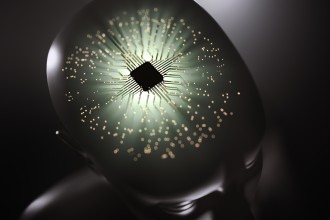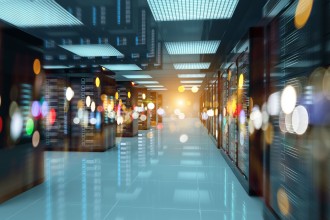AI being used in renewable energy
AI is being used in renewable energy in various ways, including optimizing the efficiency of wind turbines and solar panels, predicting energy demand, and managing power grids. AI optimization can improve the efficiency of renewable energy sources by reducing energy waste and increasing their output. Smart grid management, powered by AI, can help balance energy supply and demand in real-time, reduce energy costs, and improve grid reliability.
Case studies of AI in renewable energy
There are several examples of AI being used in renewable energy projects around the world. For instance, Google's DeepMind AI reduced energy consumption in data centers by 15%, and the use of AI to predict wind patterns has helped optimize the performance of wind farms. Other case studies have shown how AI is being used to improve the performance of solar panels, predict solar power output, and optimize energy storage.
- Wind Turbine Optimization: AI algorithms can optimize wind turbines' performance by predicting wind patterns and adjusting the angle and speed of the blades accordingly. This results in improved energy output and reduced maintenance costs. For example, General Electric's AI-powered Digital Wind Farm uses data analytics to optimize wind turbine operations and improve energy production.
- Solar Panel Performance Improvement: AI can also be used to improve the performance of solar panels by predicting the amount of sunlight available and adjusting the panel angles and positioning. This ensures that the panels are capturing the maximum amount of energy from the sun. For instance, a company called SunFolding uses AI algorithms to control the movement of its solar panels and optimize energy production.
- Energy Demand Prediction: Another way to use AI algorithms is to predict energy demand based on historical data, weather patterns, and other relevant factors. This enables energy companies to better manage energy supply and demand, reducing energy waste and improving grid reliability. For example, Opus One Solutions uses AI-powered grid management software to predict energy demand and manage energy distribution in real time.
- Energy Storage Optimization: Another use case of AI algorithms can also be to optimize energy storage systems, ensuring that energy is stored and released at the right time to meet demand. For example, Tesla's Autobidder platform uses AI to optimize the use of its energy storage systems and manage energy trading on the grid.
- Smart Grid Management: AI-powered smart grid management systems can be used to balance energy supply and demand, improve grid reliability, and reduce energy costs. For instance, Siemens' Spectrum Power 7 system uses AI algorithms to manage power distribution and optimize energy flows on the grid.
These are just a few examples of how AI is being used in renewable energy. As AI technology continues to advance, we can expect to see even more innovative use cases emerging in the renewable energy sector.
Potential challenges and concerns
While the use of AI in renewable energy has many benefits, there are also potential challenges and concerns that need to be addressed. One of the key concerns is data privacy and cybersecurity, as the use of AI requires large amounts of data that need to be protected. Additionally, the need for skilled personnel to manage and interpret the data generated by AI systems is also a potential challenge. Moreover, there is a risk of bias in AI algorithms, which could lead to inequitable outcomes.

The future of AI in renewable energy
The potential for AI to continue to transform the renewable energy sector is vast. For example, AI can be used to optimize energy storage and distribution systems, integrate renewable energy technologies, and enhance the overall efficiency and reliability of renewable energy sources. As the use of AI in renewable energy becomes more prevalent, there will be a need for continued investment in research and development to ensure a sustainable, low-carbon energy system.
Conclusion:
The use of AI in renewable energy is having a significant impact on the sector and has the potential to transform the way we generate and consume energy in the future. Responsible use of AI and continued investment in research and development are crucial to ensure a sustainable, low-carbon energy system. As we continue to develop and implement AI technologies in the renewable energy sector, we must be mindful of potential challenges and concerns and work to address them proactively.
Quickscout
Looking for suitable
technology providers?
Start scouting!







